Ancient Akoris is located c.230km south of Cairo on the east bank of the Nile, in what was the Hermopolite nome. A conspicuous rock to the south of the modern village of Tina el-Gabal serves as a good landmark of the site. The vast ruins of ancient city, which measures 600m north-south and 300m east-west, spread on a flat plateau below the rock. The earliest levels have not yet been confirmed due to the deep accumulation of debris of Coptic period, though a rock-cut mastaba and many shaft tombs show that this site was already been inhabited in the Old Kingdom period. Huge rock-cut tombs of the Middle Kingdom period and such monument as the relief of Rameses III testify the continuous occupation of this site, and a monumental rock-cut dedicatory inscription for Ptolemy V indicates that the strategic importance of Akoris was no less appreciated in the Hellenistic Period. The colonnaded chapels in the southwestern area of the city built in the reign of Roman emperor Nero and the small temple of Sarapis in the central area of the city testify the thriving urban life in Akoris under the Roman rule. The city area ceased to be inhabited in c.700 A.D. presumably due to a devastating conflagration.
The site was already known in the 19th century, but it was not until 1981 that a Japanese mission sent by Paleological Association of Japan in Kyoto launched on the first series of systematic excavations of the city area. The result of these excavations was published in 1995 and its PDF file is now available on this website (click here). In 1997 Akoris Archaeological Project was reorganized under the direction of Hiroyuki KAWANISHI, then professor of archaeology at University of Tsukuba, and started the excavations at the area on the northern edge of the city. Yoshiyuki SUTO published the stamped amphora handles of Hellenistic times from this area in 2005, and its PDF file is also available on this website (click here). Recent investigations have been conducted at the southern slope of the conspicuous rock (houses, storerooms, workshops, and tombs of the Third Intermediate Period and the Late Period) and at a large limestone quarry of Ptolemaic period at New Minya, located c. 12km to the south of Akoris.
Akoris Archaeological Project is a voluntary association of the researchers working at Akoris under the direction of Hiroyuki KAWANISHI, the general director of the project. Its current activities are partly supported by JSPS KAKENHI Grant Number 15H01888 (principal investigator: Yoshiyuki SUTO) under the auspice of Nagoya University Research Center for Cultural Heritage and Texts.
Excavation Report
PLATES
Preliminary Reports 2015-2017
AKORIS 2017
1 GENERAL VIEW
2 ARCHAEOLOGICAL INVESTIGATIONS
3 TEMPLE OF AMUN-MAI-KHENTY AT AKORIS
AKORIS 2016
1 PREFACE
2 ARCHAEOLOGICAL INVESTIGATIONS
3 INVESTIGATIONS IN THE PTOLEMAIC QUARRY
4 STRIDING DRAPED MALE FIGURE OF CHAPEL F
5 EL-SHOURAFA: The Site of ‘The Crag Great-Of-Victories’?
AKORIS 2015
1 PREFACE
2 ARCHAEOLOGICAL INVESTIGATIONS
3 INVESTIGATIONS IN THE PTOLEMAIC QUARRY AT NEW MINYA
4 LASER SCANNING OF AKORIS AND NORTH QUARRY AREA
Sub Projects
AKORIS I Amphora Stamps 1997-2001
1 General View
2 Archaeological Excavation
3 Stamped Amphora Handles
4 Historical Perspectives
AKORIS 2014
1 Preface
2 Archaeological Investigation
3 Investigations in The Ptolemaic Quarry at New Minya
4 Lithic Objects from Thina El-Gabal (Akoris)
AKORIS 2013
1 Preface
2 Preliminary Remarks on The Labor and Organization in The Ptolemaic Quarries Near Akoris
3 Clay Magical Human Figurines Unearthed from Tihna El-Gabal (Akoris)
4 Third Intermediate Period Burials at Akoris
5 Laser Scanning in Akoris
AKORIS 2012
1 Preface
2 Archaeological Investigation
3 Faunal Remains in The South Area
4 Field Survey of Ancient Quarries Near Akoris And New Minya
5 Laser-Scanning at Akoris
AKORIS 2011
1 Preface
2 Clay Cobra Figurines Unearthed From Akoris (Tihna el-Gabal)
3 Fishing in Akoris
4 Exploring The Rural Conditions of Middle Egypt in The Hellenistic Period
AKORIS 2010
1 General View
2 Archaeological Investigations
3 Epigraphic Investigation
4 Architectural Investigation




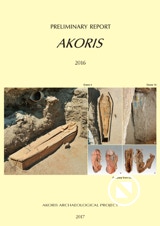
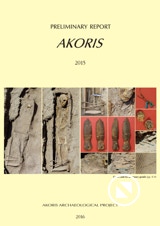

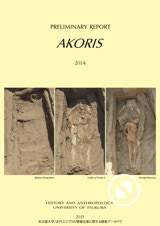
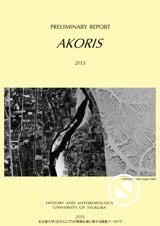
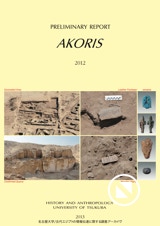

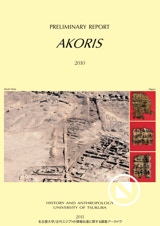
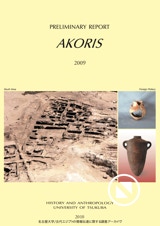


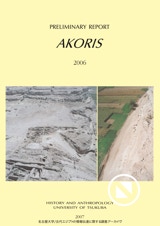










 Stumble It!
Stumble It!

No comments:
Post a Comment